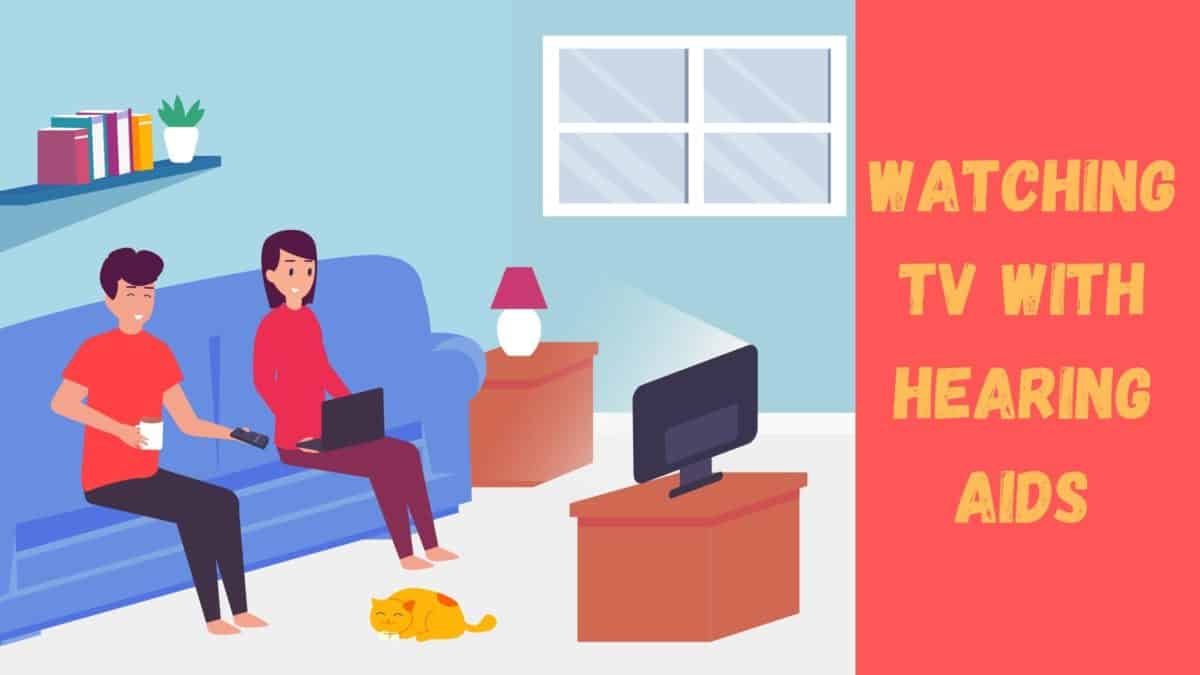- Why You Shouldn’t Do Anything With Your Earwax - April 22, 2024
- Travel Tips for People with Cochlear Implants - April 7, 2024
- How To Have A Great Conversation With People With Hearing Loss - March 22, 2024
An estimated 50 million Americans of all ages have a hearing loss. And most of these Americans have a hard time hearing the TV! Even mild hearing loss makes it much harder to follow what’s being said on the news or during your favorite show. Hearing loss makes it harder to focus on the TV audio, and tune out any background noise in the house. It also makes it much harder to follow conversations. Here are some tips for watching TV with hearing aids.
Avoid Turning Up the Volume
Your first instinct may be to crank up the volume. This is actually a very bad idea. Turning up the volume doesn’t make it easier to hear. That’s because hearing loss doesn’t affect all sounds in the same way. You may struggle to hear high-pitched sounds, but most other sounds you can hear normally. For example, you might think you can hear a sentence clearly, but you’ll miss a lot of the high-pitched consonant sounds. Without these sounds, the words won’t make any sense.
When you turn up the volume, most of the sounds become excessively loud, and can lead to further hearing loss. And turning up the volume doesn’t make sounds any clearer, so you’ll still have a hard time actually understanding what’s being said on screen.
Turn on Closed Captioning
Instead of turning up the volume, try turning on subtitles. These are called closed captions, and every TV program and cable operator is required to provide closed captioning. This text will appear along the bottom of the screen. It will provide an accurate text of what’s being said, as well as a written description of other relevant details like the sound of a door closing off-screen.
Captioning has been getting better every year. All programs are required to provide accurate subtitles, make sure they display in time with the audio, and ensure they’re placed in such a way that they won’t block anything you need to see.
To turn on closed captioning, just push the CC button on your remote to switch on captions across all programs. You can also find the CC setting in the TV settings.
Wireless Headphones for TV Watching
If you’re having difficulty hearing dialogue on screen, you can use wireless headphones when you watch TV. These will wirelessly stream audio from the TV to the headphones so you can hear audio right in your ears. This helps you focus on the sounds you want to hear and makes it easier to ignore background noise in the house. However, it doesn’t make high-pitched sounds any easier to hear. And if you’re not careful, you may turn up the volume too loud, increasing your risk of damaging your hearing with very loud noise.
Watching TV with Hearing Aids
Today’s hearing aids work better than ever before. All hearing aids have directional microphones that help you focus on the sounds in front of you and tune out background noise. They can pick up sounds from several feet away and amplify the sounds you have the most trouble hearing. You’ll be able to focus on the TV and hear what’s being said.
Hearing Aids with Streaming Programs
The best way to watch TV is with hearing aids that have wireless streaming capabilities. Several of our bestselling hearing aids are Bluetooth compatible. You can effortlessly connect them to your smartphone, your computer, and even your TV. With the press of a button, you can turn on streaming, and enjoy TV audio sent right to your ears, with no extra fuss or hassle. The best part is that the TV audio will go through the hearing aids programs that make speech clearer. You’ll have an easier time hearing high-pitched sounds, and you won’t need to turn up the volume to hear what’s happening.
Best of all, you can enjoy watching TV with your family! You can let your family choose the volume that’s most comfortable for them, and adjust your own volume in your hearing aids. They’ll never complain about the TV being too loud, or get annoyed when you interrupt to ask what happened.
Find your next hearing aids with us and start watching TV with hearing aids! Contact us today to schedule an appointment.

